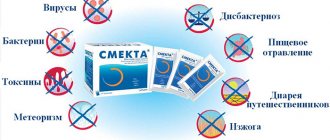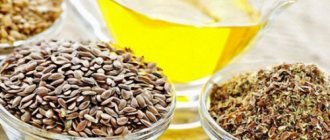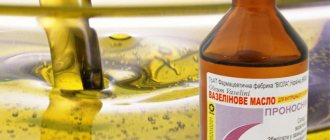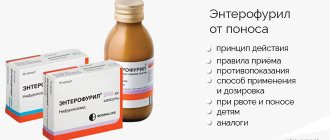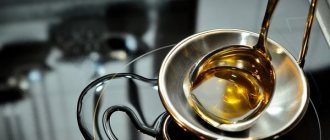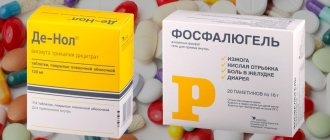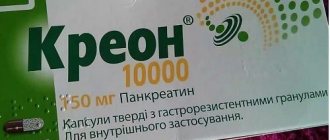Parasites are a common cause of flatulence and bloating. THESE “KILLERS” WILL BE LOMIC IF...
The pace of life of a modern person implies the speed of actions and decision making. During one day, so many different events and meetings take place that you have to mobilize all your strength and calculate the time. However, the key to success in daily affairs is good health. But when paroxysmal pain occurs in the abdominal cavity, the stomach swells from the gases accumulated in it - there can be no talk of any good health. Bloating and flatulence can be both private symptoms and harbingers of more serious diseases.
One of the most popular pharmacological agents to combat this problem is Enterofuril. But what is this anti-bloating drug? In what doses is Enterofuril used? Is it safe for children? In what cases is the drug being studied contraindicated? You can find answers to each of the above questions in this article.
History and use around the world
The active substance of Enterofuril is nifuroxazide. In different countries, nifuroxazide is sold under the brand names Ambatrol, Antinal, Nifrozid, Ercefuryl, Entofuril, Nifuroxazide. In our country, nifuroxazide is sold under the names Enterofuril, Ersefuril, Ercefuril, Diastat.
This antimicrobial substance was patented in 1966 and has been used to treat colitis and diarrhea in humans and animals. Subsequent patents describe the use of nifuroxazide as an antibiotic used to treat animals.
In the 2000s, the effectiveness of Enterofuril was questioned in Western countries. Thus, in France its use was limited to use as a rehydration supplement. After a reassessment of the benefit-risk ratio of the drug by the French Medical Agency, the use of nifuroxazide was prohibited in the treatment of children under two years of age. Due to the lack of scientific evidence for the effectiveness of Enterofuril, some domestic and foreign experts recommend not prescribing the drug at all.
In domestic medicine, the scope of use of Enterofuril is limited to diarrhea of infectious origin.
However, in our country, no reliable data on its effectiveness for diarrhea have been obtained. When using Enterofuril, you should definitely take into account that the basis for the treatment of infectious diarrhea and vomiting is restoring water balance (rehydration), and not prescribing antimicrobial agents.
How to treat
What to do with intestinal colic. Often this condition develops due to excessive accumulation of gas in the intestinal loops, resulting from intestinal obstruction or an infectious disease. Accompanied by sharp, cramping pain and bloating. First aid:
- Give the patient something warm to drink, such as chamomile and mint (lemon balm) tea. This will help to some extent relieve spasm of smooth muscles and reduce the intensity of pain.
- Take an antispasmodic drug - No-shpu (Drotaverine), etc., if this is not contraindicated by a doctor.
- Drink Espumisan (Simethicone), which helps destroy gas bubbles in the intestines and also makes their formation more difficult.
Symptomatic treatment of pain due to bloating. As a rule, in case of flatulence, in order to normalize the tone of smooth muscles, drugs from the group of antispasmodics are prescribed. They reduce increased muscle tone and moderately dilate blood vessels. The most well-known drugs in this group are No-shpa and Papaverine, as well as their analogues.
Elimination of the causes of bloating (etiotropic therapy). If flatulence is due to purely mechanical reasons, then drugs are used that stimulate intestinal motility - Duphalac, Forlax, etc. In the case of a tumor, it is recommended to remove it surgically.
Increased accumulation of gases also occurs when the intestinal motor function (peristalsis) is weakened: agents that enhance it are recommended - prokinetics (Metoclopramide, Cerucal, Domperidone). And with dysbiosis of the intestinal flora, probiotics are needed - Bifiform, Linex and similar drugs.
Infectious inflammation of the intestine, which causes digestive disorders and excessive gas formation, is treated with the use of antibacterial drugs mainly of the nitrofuran series (Enterofuril, Furazolidone), third generation cefazolins (Ceftriaxone, Cefotaxime) and ansamycins (Rifaximin).
Combating increased gas formation (pathogenetic therapy). The following groups of drugs are usually prescribed:
- enterosorbents (activated carbon, Enterosgel);
- pancreatic enzymes (Mezim-forte, Creon, Pancreatin);
- Carminatives - Simethicone.
Phytotherapy. Drug therapy is supplemented by taking herbal decoctions and infusions that have anti-inflammatory and calming effects (infusions of chamomile, cumin seeds, dill, coriander, ginger tea).
Antibiotic or not?
Enterofuril belongs to the group of intestinal antiseptics and antidiarrheal drugs.
Many are puzzled by the question: Is Enterofuril an antibiotic or not? It is not an antibiotic, but belongs to completely synthetic antibacterial agents. These agents differ in their mechanisms of action on microorganisms, their effectiveness and their overall effect on the human body. At the same time, true antibiotics are drugs that are produced by microorganisms or obtained by semi-synthetic methods.
The effect of Enterofuril depends on the doses:
- low and medium reduce the growth and reproduction of pathogenic bacteria;
- high – have a bactericidal effect (kill germs).
Enterofuril does not affect the beneficial intestinal microflora, so dysbacteriosis does not develop with its use.
Why is Enterofuril better?
It has significant advantages: – “Enterofuril” is not an antibiotic, it does not destroy beneficial microflora; – the drug is active against almost all intestinal infections, even those resistant to many antibiotics; – the therapeutic effect occurs quite quickly; – the effect of the drug is limited only to the intestines; – eliminating diarrhea, “Enterofuril” at the same time strengthens the immune system.
The drug is approved for breastfeeding, but is contraindicated for pregnant women and infants under one month. An allergic reaction (urticaria) is rare.
What diseases are treated with Enterofuril
Domestic doctors recommend the local antiseptic Enterofuril as a first-line drug in the treatment of diarrhea accompanying moderate bacterial acute intestinal infections. It has an antibacterial effect on infectious agents and opportunistic microorganisms. What does Enterofuril help with:
- Camliylobacter jejuni (campylobacteriosis),
- Citrobacter spp. (opportunistic enterobacteria),
- Clostridium difficile (pseudomembranous colitis),
- Escherichia coli (Escherichia coli),
- Klebsiella spp. (klebsiellosis),
- Enterobacter spp. (opportunistic enterobacteria),
- Salmonella spp. (salmonellosis),
- Proteus spp. (proteus infection),
- Shigella spp. (dysentery),
- Yersinia enterocolitica (yersiniosis),
- Vibrio cholera (cholera),
- Streptococcus faecalis (opportunistic enterobacteria).
Like other drugs of the nitrofuran group, it is ineffective against:
- Burkholderia cenocepacia (cystic fibrosis),
- Pseudomonas aeruginosa (Pseudomonas aeruginosa).
According to the manufacturer, in addition to its broad spectrum of action, Enterofuril has other advantages over antibiotics in the treatment of diarrhea:
- does not disturb the intestinal microflora, restores populations of beneficial microorganisms during bacterial infection;
- when infected with viruses, prevents the development of repeated bacterial infection;
- activates the immune system;
- poorly absorbed, therefore it acts only in the intestines and is excreted in feces;
- strains of bacteria resistant to antibiotics remain sensitive to the antibacterial action of nitrofurans, to which Enterofuril belongs.
Mechanism of action
Enterofuril syrup is an antimicrobial agent that has a broad spectrum of action and is used to combat infectious lesions of the digestive system. The medicine Enterofuril for children is produced by the company Bosnalek.
The principle of action of the substance is based on the destruction of bacterial cells. The drug helps cope with streptococci, salmonella, clostridia, yersinia and other infectious agents. The drug does not disturb the beneficial microflora, therefore, after its use, dysbacteriosis does not develop.
- Enterofuril - instructions for use for children, suspension, capsules, how to take enterofuril during pregnancy
- Enterofuril liquid for children
- Is it possible to drink flaxseed oil if you have cholecystitis?
- How to take Mezim correctly: dosage and method of application
Contraindications
According to the manufacturer, Enterofuril is well tolerated by most patients with bacterial infections with vomiting and diarrhea and has a minimum of side effects. At the same time, it has some contraindications:
- it should not be given to premature babies;
- under one month of age;
- children with congenital enzyme deficiency, as it contains sucrose;
- adults and children with sensitivity to 5-nitrofurans.
When using Enterofuril, the possibility of developing an allergic reaction and acute pancreatitis must be taken into account.
Release form and dosage
Enterofuril is produced in the form of capsules and also in the form of a suspension.
- Capsules of 100 mg or 200 mg of active substance.
- Suspension for drinking in 90 ml bottles.
For adults and children over seven years of age, Enterofuril is prescribed in the form of capsules, for children under two years of age - only in the form of a suspension. The suspension is dosed using a measuring spoon included with the package. Before use, the suspension must be mixed well.
The duration of treatment with Enterofuril should not last longer than seven days.
Instructions
- Russian
- Kazakh
Tradename
International nonproprietary name
Dosage form
Compound
active substance
– nifuroxazide 100 mg, 200 mg
Excipients:
sucrose, corn starch, microcrystalline cellulose, magnesium stearate,
capsule composition:
iron oxide yellow (E 172), titanium dioxide (E 171), gelatin.
Description
Hard gelatin opaque capsules of yellow color (for a dosage of 100 mg, size No. 2) and yellowish-brownish color (for a dosage of 200 mg, size No. 0). Contents of the capsule: Yellow powder or compressed yellow powder, crumbling when pressed lightly. It is acceptable to include small lumps of compressed mass in the powder.
Pharmacotherapeutic group
Antidiarrheal drugs. Intestinal antimicrobial and anti-inflammatory drugs. Other intestinal antimicrobials. Nifuroxazide.
ATX code A07AX03
Pharmacological properties
Pharmacokinetics
When the intestinal mucosa is intact, absorption of the drug is extremely low.
Enterofuril belongs to nitrofuran derivatives containing a nitro group (NO2), which has an antiseptic effect. The NO2 radical can be reduced to nitroso derivatives, which change the bases of bacterial DNA. All these derivatives have bacteriostatic and bactericidal effects.
Enterofuril has an inhibitory effect on the activity of dehydrogenases and protein synthesis in bacterial cells, mostly in the intestinal lumen. Enterofuril does not cause resistance in bacterial strains and does not inhibit the saprophytic intestinal flora, which is the first protective barrier of the gastrointestinal tract against pathogenic microorganisms.
Clinical studies have found that nifuroxazide does not increase the population of resistant bacteria in the intestines and yeast fungi compared to an antibiotic (for example, taking neomycin for 7 days).
Other clinical studies have shown that nifuroxazide has no effect on fecal flora in healthy subjects, either after high doses (1200 mg) or at usual therapeutic doses (800 mg/day for 6 days).
Activity of nifuroxazide against some strains:
inhibitory concentration (MIC Cam pylobacter, Vibrio cholerae, Shigella Clostridium perfrigers;
moderately sensitive group (MIC 32 mg/l):
Escherichia coli, Salmonella, Haff n ia, Yersinia , Staphylococcus , Enter o coccus ;
resistant group (MIC > 32 mg/l):
Klebsiella , Enterobacter , Serratia , Proteus mirabillis , Providentia , Pseudomonas , Acinetobacter .
Indications for use
Diarrhea of bacterial origin
Indications for the use of Enterofuril in children
According to the recommendations of the World Health Organization (2006), treatment with antimicrobial agents, which include Enterofuril, should not be carried out in children diagnosed with diarrhea. There are some exceptions:
- cases of bloody diarrhea (dysentery);
- suspicion of cholera due to severe dehydration;
- laboratory confirmed Giardia duodenalis infection.
Antibacterial therapy for infectious diarrhea in children under one year of age is prescribed if:
- immunodeficiency conditions,
- concomitant immunosuppressive therapy,
- hemolytic anemia,
- HIV infection,
- cholera.
Such children should immediately undergo treatment in a hospital. At the same time, they are prescribed antibacterial agents only after rehydration, that is, 3-6 hours after arrival at the hospital.
At the same time, according to domestic researchers, the inclusion of Enterofuril in the complex of drugs in the treatment of acute intestinal infections contributes to:
- improvement of general condition,
- normalization of appetite,
- reducing the duration of fever, vomiting, intoxication, diarrhea.
The use of Enterofuril can reduce the length of a child's stay in the hospital by 2-3 days.
How quickly does Enterofuril act for diarrhea?
The active ingredient of the intestinal antibiotic Enterofuril does not penetrate the bloodstream.
It begins to work immediately after it passes the stomach. Having accumulated in the intestinal lumen in a sufficient therapeutic concentration, nifuroxazide stops diarrhea. The first effects are noticeable after 1-2 hours, and then the intensity of diarrhea constantly decreases. If you drink Enterofuril suspension, the diarrhea will go away faster . But taking capsules will somewhat delay the onset of the therapeutic effect - it takes from 20 to 40 minutes to dissolve the gelatin shell. But Enterofuril tablets for diarrhea also have their advantages. They are convenient to take with you to work, on long trips and travels.
Enterofuril for diarrhea in the form of tablets (capsules) is a mandatory attribute of a traveler’s first aid kit. It will help cope with mild to moderate diarrhea that occurs after eating unusual foods.

